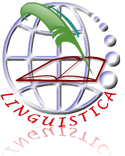An Analysis of Conversational Implicature in Smart Fm™s Radio Talk Shows
DOI:
https://doi.org/10.24114/jalu.v2i4.943Abstract
ABSTRACT The objectives of this research were to find out the two types of conversational implicature, namely: generalized conversational implicature and particularized conversational implicature and the dominant one used in Smart FM™s Radio talk shows. This research was conducted by using qualitative descriptive design. It took fifty eight conversations taken from Smart FM™s Radio talk shows which were on air from April 3rd until 24th 2012. The result of analyzing found two types of conversational implicature were used in the talk shows in Smart FM, they were: generalized conversational implicature and particularized conversational implicature. The findings of data analysis showed that the total numbers of conversational implicature from the two types were: 25 (62,5%) generalized conversational implicature and 15 (37,5%) particularized conversational implicature. It means that generalized conversational implicature is the most dominant type of conversational implicature used in Smart FM™s Radio talk shows. It is 62,5%. Generalized conversational implicature is dominant because it indicates that when the interviewees answer the question, they usually used the clear answer to make their partner and listeners understand what he/she talked about. It can be concluded that the dominant conversational implicature that occured in the four editions of Smart FM™s Radio Talk Shows was Generalized Conversational Implicature. It shows that the interviewee gave a strong and clear implicit meaning. Keywords: Conversational Implicture, Talk ShowDownloads
How to Cite
Pakpahan, I. B., & Sumarsih, S. (2013). An Analysis of Conversational Implicature in Smart Fm™s Radio Talk Shows. LINGUISTICA, 2(4). https://doi.org/10.24114/jalu.v2i4.943
Issue
Section
Articles
License
Copyright (c) 1970 Irma B. Pakpahan, Sumarsih Sumarsih

This work is licensed under a Creative Commons Attribution-ShareAlike 4.0 International License.
Authors who publish with this journal agree to the following terms:
- Authors retain copyright and grant the journal the right of first publication with the work simultaneously licensed under a Creative Commons Attribution License that allows others to share the work with an acknowledgment of the work's authorship and initial publication in this journal.
- Authors are able to enter into separate, additional contractual arrangements for the non-exclusive distribution of the journal's published version of the work (e.g., post it to an institutional repository or publish it in a book), with an acknowledgment of its initial publication in this journal.
- Authors are permitted and encouraged to post their work online (e.g., in institutional repositories or on their website) prior to and during the submission process, as it can lead to productive exchanges, as well as earlier and greater citation of published work (See The Effect of Open Access).
- This work is licensed under a Creative Commons Attribution-ShareAlike 4.0 International License.









